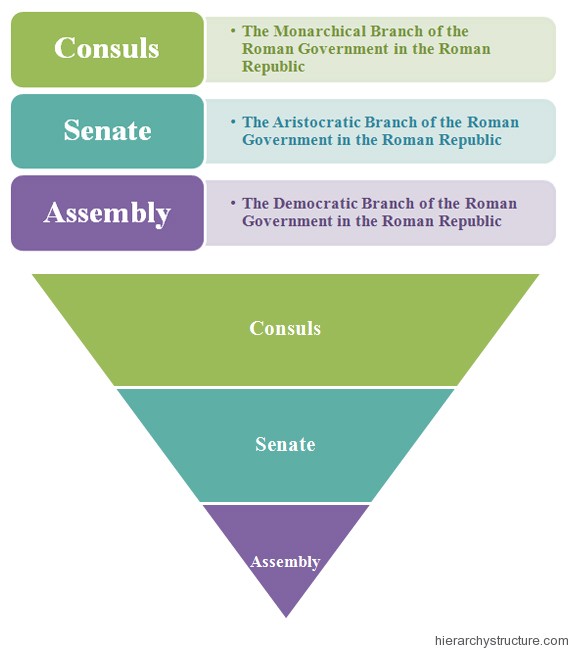Ancient Rome was one of the most exquisite and thriving civilizations that started growing on the Italian Peninsula in the beginning of the 8th century. The civilization was centered on the city of the Rome and expanded amorously to become one of the largest empires in the ancient world.
This civilization existed for approximately twelve centuries and went through three major drifts that entirely defined the ancient Roman government hierarchy and that started from monarchy government to an aristocratic republic and then moving drifty to autocratic empire. The ancient Roman government hierarchy is described below starting from the first government structure and ending with the last one. These are described in brief below.

- The Consuls
- The Senate
- The Assembly
Consuls: The Monarchical Branch of the Roman Government in the Roman Republic – This class was also termed in short as the Consuls. Consuls were a sort of magistrates. Two consuls were appointed to perform the duties that prior to them King was responsible of, like military authority and holding supreme civil in Republican Rome. The powers of the consuls include leading the army, serving the judges, possessing the right to 12 lictors each as well as representing Rome in the foreign affairs. But the office of consul could survive only for one year.
During the period between in c. 753 B.C. to c. 509 B.C., Roman government followed the monarchy approach, ruled by the kings of the Rome. But then the Roman republic was established. Even though the advisors and assistants were employed by the Emperor, there were many unattended important agendas like centrally planned budget. Some historians believe that this was one of the major reasons behind the decline of its government and the ancient Roman Empire itself.
Senate: The Aristocratic Branch of the Roman Government in the Roman Republic – The next exquisite and vital level in the ancient Roman government hierarchy was the Senate government means the aristocratic branch of the Roman government in the Roman republic. Senate was the advisory branch of the Roman government, earlier on composed of about 300 citizens who served for life.
Initially, the senators were only patricians but then slowly and gradually plebeians also joined their ranks. They were chosen by the kings, at first, then by the consuls, and by the end of the 4th century, by the censors. This was the major law making and designing committee in the ancient Roman Empire.
Assembly: The Democratic Branch of the Roman Government in the Roman Republic – The last and quite the most important and crucial level of the ancient Roman government hierarchy was of the democratic government. This made a huge contribution to the scenario which current Rome is living up to. The Assembly of Tribes was constituted of all rejected or approved laws, citizens, and determined issues of war and peace. The Assembly of Centuries was made up of each and every member of the army.
